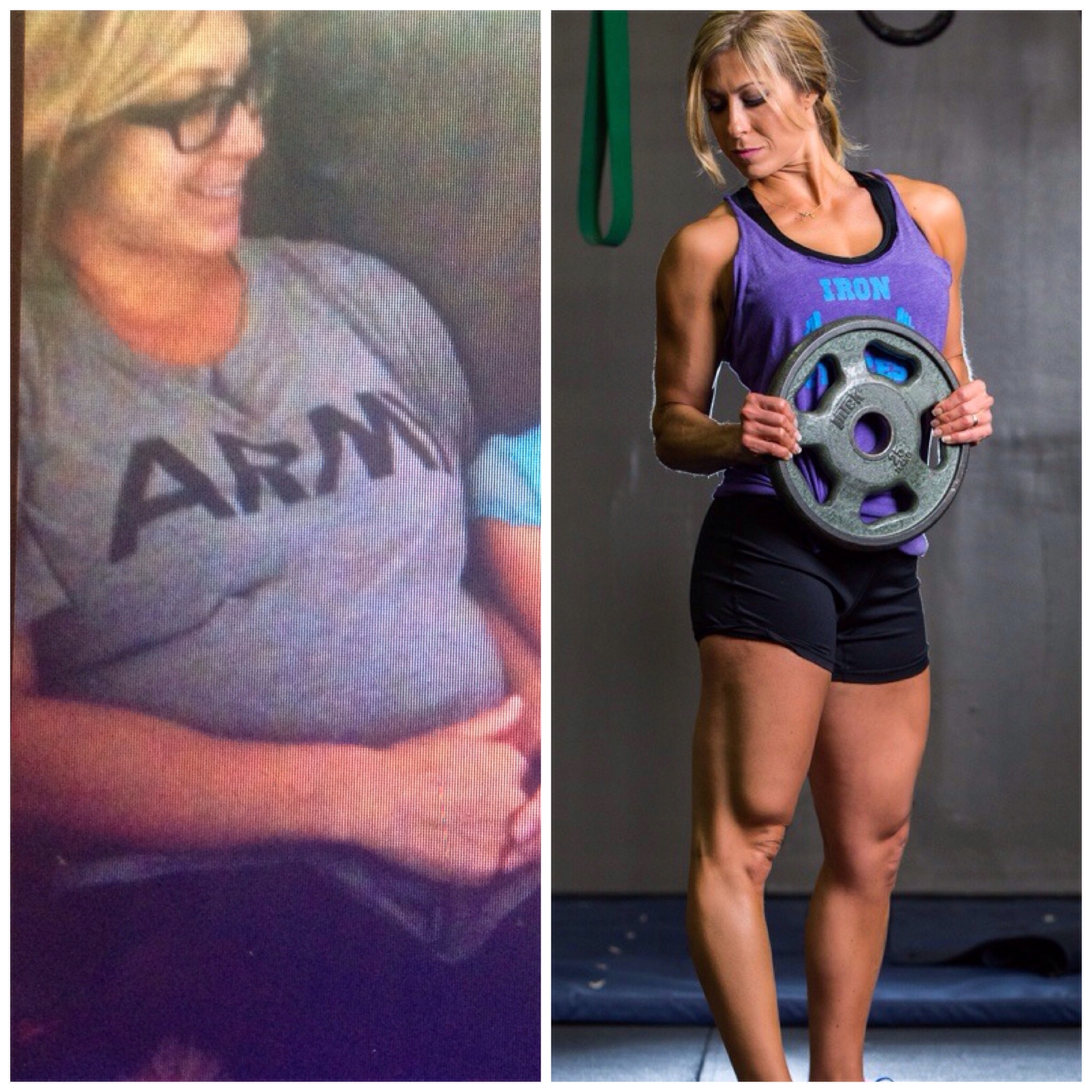
by EM2WL | Mar 10, 2015 | Current Fitness Competitors, Fat Loss / Cutting, Interviews/Guest Posts, Self Acceptance, Strength Training
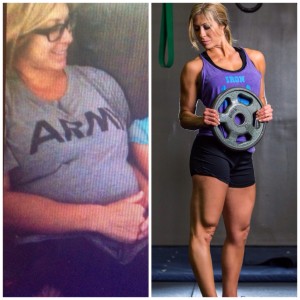 EM2WL: Like so many of us, you bought into the eat less move more propaganda. You talked about being at your ideal scale weight but your body still not looking the way that you wanted. What was the turning point for you and what steps did you take to make a change?
EM2WL: Like so many of us, you bought into the eat less move more propaganda. You talked about being at your ideal scale weight but your body still not looking the way that you wanted. What was the turning point for you and what steps did you take to make a change?
Christie: It’s true, I ran more and ate less thinking being smaller (on the scale) would get me closer to my ideal “look.” My moment of change came when a trainer at my gym noticed my athletic drive, asked if I’d consider a figure competition (had no clue what it was, did my research and saw the look I wanted). I dived in and quickly learned I needed to eat more, run less, and train smarter to change my body. I stopped cardio almost completely, lifted 4-5 days a week hitting each body part, and made sure I was eating enough to support my goals.
E: You used to be a runner, right? Where do runs fit in your regimen now?
C: I do love what a run can do for the spirit, and will do so when I feel the need, but I do s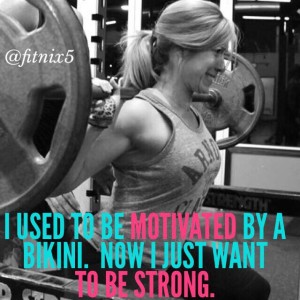 prints mostly now, for 10-12 minutes, and that’s the extent of my running. 30 seconds on and 30 seconds off.
prints mostly now, for 10-12 minutes, and that’s the extent of my running. 30 seconds on and 30 seconds off.
Here is a blog I wrote specifically to running vs. lifting and my body/mindset.
http://www.fitnixfitness.com/2014/09/09/running-vs-lifting/
E: What advice do you have for women who are pregnant and worried about ‘ruining’ their body, or postpartum and scared that they’ll never get their pre-baby body back?
C: You aren’t ruined, changed, yes, ruined, no!! I love that I can share my postpartum journey, pregnancy takes over my body, regardless of my efforts, I gain a lot, and lose all muscle tone…basically, if I chose to accept the mentality that I was ruined, I most certainly would look that way. My advice, know what you want, do your part each day, give yourself the GRACE you would a friend to get there, and your body will take form like you never thought possible. You’re a mom now also, training is about more than a look at this point, it’s a break, a spiritual release, and being strong means more than a look…you’ll find the journey to inner strength will take you farther than any “body after baby” goal ever will.
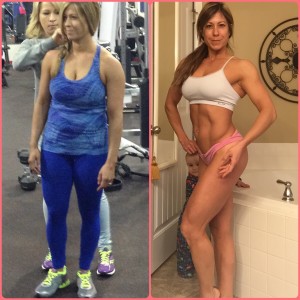 E: Switching gears to your figure competition diet and prep…People often hear of a competitor doing a 9,12, 20 week, etc competition prep and feel that their own journey should be “finished” within similar lengths of time. How long would you say the time was between giving birth and the “official” beginning of prep for your recent return to the stage? (In other words, how much “pre-prep” prep?)
E: Switching gears to your figure competition diet and prep…People often hear of a competitor doing a 9,12, 20 week, etc competition prep and feel that their own journey should be “finished” within similar lengths of time. How long would you say the time was between giving birth and the “official” beginning of prep for your recent return to the stage? (In other words, how much “pre-prep” prep?)
C: Great question!! I knew I wanted to compete at least once more after baby #3 so I trained with that in mind. I just recently picked a show in April and started my actual prep in January, knowing I did my part the past year to facilitate a healthy and balanced approach to the stage. So 17 months or so of training and proper nutrition, and 4 months of actual prep.
E: There seems to be a divided camp these days. Do you feel that it’s possible for women to practice both body acceptance AND seek improvements at the same time?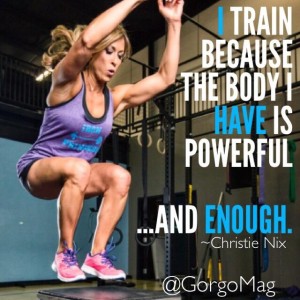
C: I couldn’t agree more. Sometimes I wonder where I fit…and my answer is YES!!!
My self-love, acceptance, and perspective doesn’t come from how I look, it comes from God!! But God also put a fire in me to do more, be more, strive for more…for now that takes on the form of competing in the sport of Figure. While it is extremely subjective, I know that I am giving it my all and will hit the stage with that attitude. The idea of seeing what I’ve worked for on stage, taking time to assess my progress and continue to strive for more excites and pushed me!
However, competition or not, the gym is where I look to be judged, am I getting stronger, am I doing a little of what scares me, am I lifting more and moving better…being fit and striving for more has so much more to do with how you feel than how you look!!!
E: Has any of your body composition changes affected the way that you dress, clothing size/style?
 C: Actually…no…I weigh the most I ever have and wear the same size pants. I naturally have a wide frame around my lats, so now I’ve embraced that and know to grab a medium top first and go from there. Doesn’t mean I’m fat, need to lose weight, or should restrict things from my diet, just means I’m better at those pull-ups I’m always trying to perfect.
C: Actually…no…I weigh the most I ever have and wear the same size pants. I naturally have a wide frame around my lats, so now I’ve embraced that and know to grab a medium top first and go from there. Doesn’t mean I’m fat, need to lose weight, or should restrict things from my diet, just means I’m better at those pull-ups I’m always trying to perfect.
E: Moms often feel the pull between fitness, career goals, and spending enough time with their family. With 3 kids of your own, a personal training/nutrition coaching business and preparing for return to the stage, how do you keep everything in balance?
C: The best part of being a fit mom, is working with other fit moms…they understand. So I have set hours for work and the rest is family time. I look at my mom duties, schedule, errand routine, and plan my fitness business around that. As for my training, its an appointment with myself also. I block off time to do that as well.
As for competition prep on top of all that…I took the past 15 months as a part-time working mom of three to fine tune the habits I’d need to do a Figure show, learning how to balance the family, training, work and meal planning. And I have to admit I’m a big fan of a meal replacement shake for on the go!!
E: Where would you suggest a new mom start with getting back in shape?
C: I love this quote, “start where you are, use what you have.” And that’s the secret, you just have to start. If you love to run, make a plan and go run, if you want to lift weights, hire a trainer and learn your way around the gym, join a cross fit box, there are so many people out there waiting to help you, invest into yourself and go for it!! Start small and build from there!!
E: How can our readers hear more from you?
C: Would love the company of any of your followers on my social media sites,
Website: fitnixfitness.com
Facebook: facebook.com/fitnix5
Pinterest: pinterest.com/fitnix5
Instagram: instagram.com/fitnix5
Twitter: twitter.com/fitnix5
Youtube: Christie Nix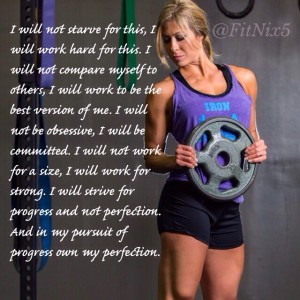
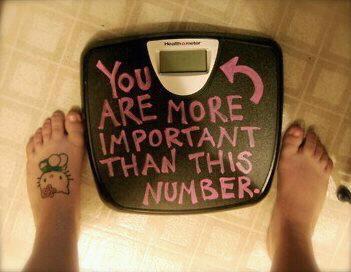
by EM2WL | Mar 4, 2015 | Building Muscle, Strength Training, TDEE/BMR
If you’re stuck in a relationship with your scale — using it as the primary tool of measuring the success of your diet and workout program — then it’s time to break up! Using the scale to gauge your success may tell you if you are losing weight or not, but it will not tell you about the QUALITY of the weight that you are losing. You have no way of knowing if those losses that you may be seeing are fat, water, or even worse, muscle!
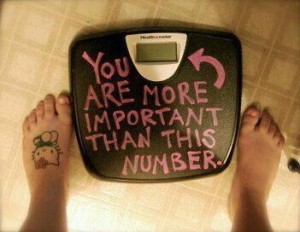 The diet industry has done very little to change this perception. Advertisements continually pound consumers with promises for quick and permanent weight loss, often through decreased caloric intake and increased exercise (“eat less, move more”). Although this may result in a significant (scale) weight loss, initially, what is not taken into account is that much of what these consumers will be losing is muscle, rather than fat. This muscle loss is a primary reason that weight gain will likely occur when they are no longer able to maintain this low calorie/high exercise regimen. Every dieter has experienced this “fall off the wagon” weight gain upon returning to their previous eating habits. Plain and simple: if your weight loss plan results in muscle loss rather than fat loss, your metabolism will soon be in trouble!
The diet industry has done very little to change this perception. Advertisements continually pound consumers with promises for quick and permanent weight loss, often through decreased caloric intake and increased exercise (“eat less, move more”). Although this may result in a significant (scale) weight loss, initially, what is not taken into account is that much of what these consumers will be losing is muscle, rather than fat. This muscle loss is a primary reason that weight gain will likely occur when they are no longer able to maintain this low calorie/high exercise regimen. Every dieter has experienced this “fall off the wagon” weight gain upon returning to their previous eating habits. Plain and simple: if your weight loss plan results in muscle loss rather than fat loss, your metabolism will soon be in trouble!
The Importance of Muscle
Muscle is so important because it is essential for maintaining one’s BMR (Basal Metabolic Rate). Your BMR is responsible for approximately 2/3 of your daily caloric burn or TDEE (Total Daily Energy Expenditure). Without muscle mass and fuel (food), your metabolism will soon likely slow to a crawl. Indiscriminately dieting and exercising without the end goal being muscle gain (or at least maintenance) is a sure recipe for disaster: muscle LOSS.
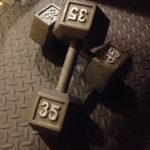 Losing all of that valuable, metabolically active muscle mass, is setting yourself up for a rebound weight gain. You can’t maintain a very low caloric intake combined with excessive cardio workouts, so you’ll inevitably return to your old eating habits — or perhaps continue to restrict — but now with occasional all-out binges thrown in. With your muscle-deficient metabolism creeping along at an all-time low, this increased intake will inevitably result in weight (fat) gain. Following a low calorie diet combined with (often excessive) aerobic exercise will most likely result in an initial scale weight loss, but if the loss is muscle rather than fat, this scenario is setting you up to become a smaller, flabbier version of your current self (the dreaded “skinny fat”).
Losing all of that valuable, metabolically active muscle mass, is setting yourself up for a rebound weight gain. You can’t maintain a very low caloric intake combined with excessive cardio workouts, so you’ll inevitably return to your old eating habits — or perhaps continue to restrict — but now with occasional all-out binges thrown in. With your muscle-deficient metabolism creeping along at an all-time low, this increased intake will inevitably result in weight (fat) gain. Following a low calorie diet combined with (often excessive) aerobic exercise will most likely result in an initial scale weight loss, but if the loss is muscle rather than fat, this scenario is setting you up to become a smaller, flabbier version of your current self (the dreaded “skinny fat”).
If weight loss is your goal, then you want to make sure that what you are losing is truly fat, and not metabolism-fueling muscle mass. The body naturally burns more calories each and every day to support a pound of muscle than it does to support a pound of fat (which is metabolically inactive), so the end goal should be to have as much muscle as possible in an effort to keep the metabolism running at a high rate.
What does this have to do with the scale?
Muscle is dense and, by volume (the amount of space it occupies on your body), weighs much more than the flabbier fat. The end result: if you build some *heavier* muscle, your body will appear smaller and tighter due to the dense nature of muscle, but the scale may not show much movement downwards. Hence the reason to not put a lot of emphasis on the number that you may see on the scale.
 Other than the scale, there are many ways to monitor progress, from the most basic, right up to the most technologically advanced methods (BodPod testing, Bio-electrical Impedance, skin-fold caliper testing, measurements and simply taking progress photos all can be very useful). If nothing else, everyone should start with a set of progress photos and update them on a monthly basis. Once you begin strength training, you will be glad you did!
Other than the scale, there are many ways to monitor progress, from the most basic, right up to the most technologically advanced methods (BodPod testing, Bio-electrical Impedance, skin-fold caliper testing, measurements and simply taking progress photos all can be very useful). If nothing else, everyone should start with a set of progress photos and update them on a monthly basis. Once you begin strength training, you will be glad you did!
So what can you do to ensure long-term success? Invest some time in some strength training. Build some metabolically active muscle in an effort to keep your metabolism running at optimal levels. Just doing plain old cardio or aerobic exercise will do little if nothing to build muscle, and in fact, doing too much will actually begin to break down that hard-earned muscle tissue. The best thing you can do for yourself and your metabolism is to build some muscle tissue. Not only will you be physically stronger, but you will be less susceptible to injury, and your body composition will begin to change and improve over time. Soon you will notice that you can fit into clothes which were previously too tight, even though the scale is not really moving. Being strong is also empowering!
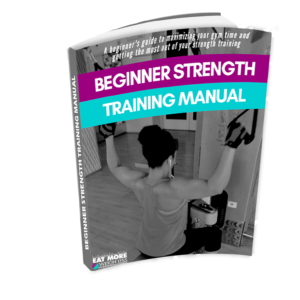 When considering a nutrition and exercise program, muscle growth and maintenance should be “front and center.” Seek out a good, periodized strength training program and start to challenge yourself. Confused as to where to start? Check out EM2WL’s Beginner Strength Training Manual for answers to the most frequently asked questions, as well as a complete 12-week workout plan, access to a *bonus* private area with video demonstrations of each exercise, & a place for any other questions you have along your journey. Combine strength training with fueling your body properly by eating at or slightly below your TDEE (Total Daily Energy Expenditure) and you will be on the road to success!
When considering a nutrition and exercise program, muscle growth and maintenance should be “front and center.” Seek out a good, periodized strength training program and start to challenge yourself. Confused as to where to start? Check out EM2WL’s Beginner Strength Training Manual for answers to the most frequently asked questions, as well as a complete 12-week workout plan, access to a *bonus* private area with video demonstrations of each exercise, & a place for any other questions you have along your journey. Combine strength training with fueling your body properly by eating at or slightly below your TDEE (Total Daily Energy Expenditure) and you will be on the road to success!
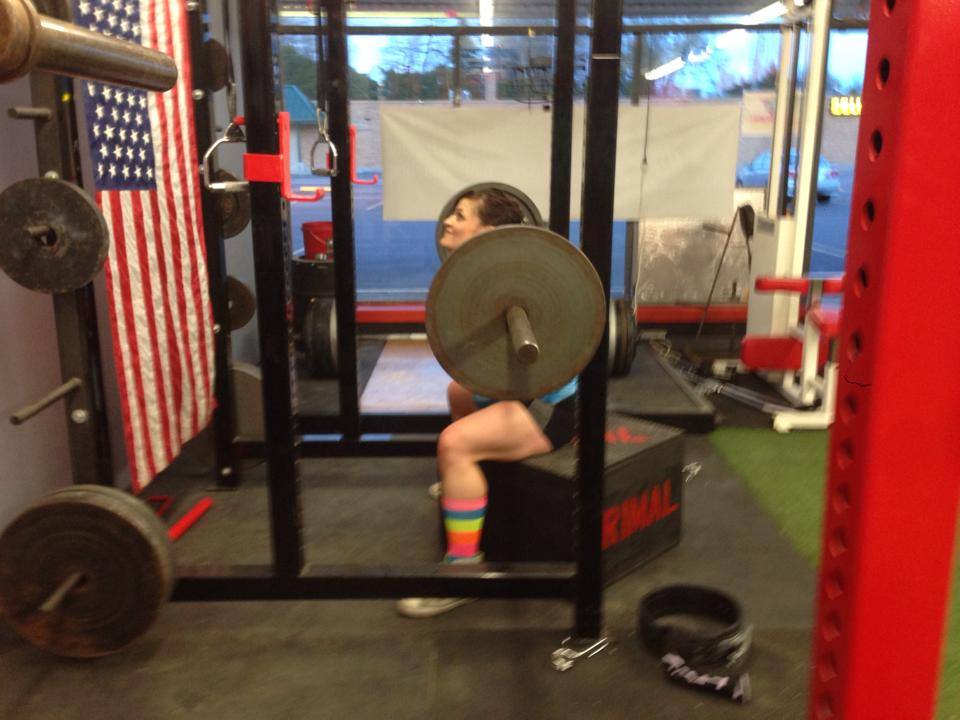
by EM2WL | Feb 20, 2015 | Building Muscle, Strength Training
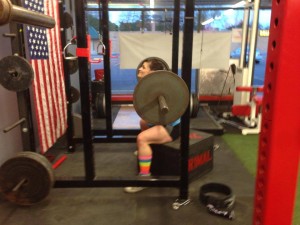 In the world of women’s sports, we’ve moved far beyond the days of basketball, softball, and tennis. Weight lifting sports have not only expanded to include women, but we now have a variety of iron-based sports to choose from. Because the concept of lifting is such new territory for some, it’s easy to want to mesh every sport that uses a barbell into the same category. But just as with football and futbol, figure skating and ice hockey, long distance running and sprinting – one sport may have commonalities with another (equipment/environment), yet be entirely different (execution/goal).
In the world of women’s sports, we’ve moved far beyond the days of basketball, softball, and tennis. Weight lifting sports have not only expanded to include women, but we now have a variety of iron-based sports to choose from. Because the concept of lifting is such new territory for some, it’s easy to want to mesh every sport that uses a barbell into the same category. But just as with football and futbol, figure skating and ice hockey, long distance running and sprinting – one sport may have commonalities with another (equipment/environment), yet be entirely different (execution/goal).
Let’s take a general overview at the difference between four popular women’s lifting sports:
Crossfit– This Reebok Sponsored event has catapulted in popularity over the last decade. The goal of Crossfit (CF) athletes is to be prepared for anything: “the unknown, and the unknowable.” It combines a variety of strength and conditioning exercises such as deadlifts, pistol squats, kipping pull ups, overhead squats and hand stand pushups with bouts of cardio (rowing, running, swimming, etc). WOD’s, or workouts of the day, are the “bible” of Crossfit and give athletes their game plan for their daily workout. Official WODs are done in a CF “box,” led by a CF accredited coach. Most workouts are done for time — not reps, like most typical strength training — though the occasional 1×1, 3×5, or 5×5-type WOD will make an appearance to enhance strength gains. This sport can be very fast-paced, requiring both speed and precision in execution/form of basic strength and Olympic lifts. Because of this, a strength base is typically well-established before entering Crossfit (top CF athletes often cross over from being a top athlete in another sport). CF athletes strive for a high anaerobic capacity, and train their bodies to hit their lactate threshold (you know…that pukey HIIT feeling? LOL) at any given time. Winners of the increasingly popular “Crossfit Games” are crowned with the title of “The fittest (woman) on earth.”
Strongwoman– If you’re familiar with the sport of Strongman, then you’re mostly familiar with Strongwoman (SW) – though you may not realize it. Since Crossfit seems to have put women’s lifting “on the map” – it can be easy to assume that the average Strongwoman is a CF woman. Though a SW can (and many do) perform a WOD with little difficulty, the competition training for this event and the equipment used varies from that of CF – mainly in it’s specializations. This sport also involves strength, muscle endurance and distance events. However, women compete with each other doing exercises such as sled (or truck ;)) push/drags, bag carries, tire deadlifts, atlas stones, farmer’s walks, log pressing, etc. These exercises all require excellent cardio condition and ability to handle large amounts of weight in often unbalanced situations. This sport is medium-paced, depending on the event taking place, and winners are deemed the “strongest” (woman) in the state/nation, etc.
.
Powerlifting– Most forms of lifting borrow from the three main compound lifts that come together in the sport of Powerlifting (PL) – bench press, squat and deadlift. Though PL women will often dip in to all rep ranges and may participate in a variety of physical activities/lifts, the sole focus of this sports’ competitions is strength in the main lifts. So as comp season nears, the conditioning and endurance levels built in other phases are put to the test as they train for record breaking strength feats. PL ladies compete by weight class and get three attempts at each lift, ideally increasing the weight with each lift. Proper form is essential, and a competitor must get two white lights (signaling good form/a good lift) out of three lights total (red lights occur when form is improper or commands aren’t adhered to). This sport is definitely on the slower side, as you need adequate rest between each heavy attempt.
Bodybuilding– While CF may be getting all of the recent media coverage, women’s bodybuilding (BB) has been around for decades, and is often the term that comes to mind when someone first hears of a woman wanting to “lift weights.” Unfortunately, the image that usually pops into mind with this term is often negative, and based on only one division of this sport (bodybuilding). Women’s BB actually consists of four different divisions: bodybuilding, physique, figure and bikini — each having a separate set of aesthetic requirements for competition (which I will address in the next part of this series). BB athletes can and do participate in all types of lifting activities in their off-season, though most training utilizes some form of periodization that leads the desired look for their event. These women train with traditional forms of weight lifting — using both compound and isolation movements — to aesthetically enhance every muscle in the body. Preparing for this sport involves manipulating various training variables (food/rep ranges/types of cardio) to first maximize muscle mass gains, and ultimately to achieve abnormally lean results for a brief period of time (as per specific division requirement). These competitions are purely based off of appearance and stage presence, sort of like a beauty-pageant style event for women who lift. Though properly trained BBers are plenty strong, actual strength is irrelevant to the competition, as you are judged solely off things such as musculature, symmetry, tan, hair, makeup, suit, etc.
Society still presents some degree of hesitation when it comes to ladies being more than the stereotypical “weaker sex,” and many ladies still hesitate to join the movement. Nevertheless, with the popularity of programs like P90x, more sculpted bodies gracing women’s magazine covers, and the recent explosion of Crossfit, ladies are making a breakthrough in the lifting scene. Many women now take pride in developing higher levels of strength, and increasing levels of confidence to take on the competition scene. Though the various sports are often lumped into one category, the lifting revolution shows no signs of slowing down any time soon.
In part 2 of this series, we’ll break down the different divisions of bodybuilding. Til then, go out and lift a barbell, dumbbell, your body, a truck…something heavy! ;)
~Kiki

by EM2WL | Feb 4, 2015 | Testimonials, Transformations
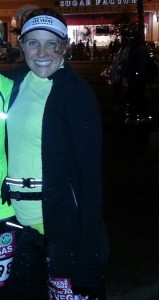 How long have you been on this journey?
How long have you been on this journey?
All my life! Ever since I was young I was always aware of my weight, probably due to the media influence. Even as young as four I thought I was fat. I watched my mom struggle on different diets over the years as well. Her journey with food and weight loss had a big impact on me. As a teen, I would try different diets, everything from basically starving myself, to Atkins, to South Beach. In college I tried the low-fat approach. All these diets would work for a period, but none gave me the body I wanted and all left something to be desired. After graduating, I started to pack on pounds at a desk job, and that was what led me to find MFP (MyFitnessPal) and calorie counting. It wasn’t until about a year later that I found the EM2WL group.
When did you first learn that you needed to eat more to reach your goals? What was your original response?
Probably about a year after I started calorie counting. In 2011 I joined MFP, and signed up for the standard 1,200 calories/day diet. I was also training 3-4 times a week for a half-marathon. I would eat back my exercise calories, but I was always hungry, tired and grouchy (ask my roommates!). One day I somehow came across the EM2WL group. All the facts seemed to make sense, but I was scared. In fact, I was really scared. I had managed to lose a couple of pounds eating a 1200 calorie diet, and didn’t want to gain any of it back.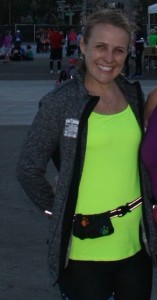
How did others around you act about your decision to discard the usual low cal methods for weight loss?
Most people were supportive. I don’t think anyone likes being on a diet, so most people are open to the idea of eating more if they can do so without expanding their waistline.
How did your body react to the initial increase in cals?
Pretty well. At first I didn’t want to increase too drastically, so I went up to about 1,800 calories a day. I didn’t gain weight, and best of all, I felt SO MUCH BETTER. I wasn’t foggy, had better concentration at work, and felt like I recovered from workouts much faster. On 1,200 a day, I was always hurting and required more sleep, but still didn’t feel fully recovered. I stayed at 1,800 calories for about 2 years until Fall 2014, when a trainer encouraged me to up calories again! I had the same response as before – I was scared because I didn’t want to get fat. But I trusted him, started packing in the protein, and for the first time in my life, I saw real muscle gain!! I started lifting in 2012 around the same time I discovered EM2WL, but never had great strength gains. Sure I got a little stronger and increased my PRs, but I didn’t have much muscle growth. Once I learned to trust the process and eat more, it was like BOOM! There are the muscles!
 Did your family notice or comment on any changes once you upped your calories for a period of time?
Did your family notice or comment on any changes once you upped your calories for a period of time?
In the past several months since upping my calories to 2,200-2,400 a day, several co-workers have noticed. One said I look a lot leaner, and another commented, “whatever you’re doing must be working!”
Can you describe your typical workout schedule prior to EM2WL and today?
Prior to EM2WL I was working out about 5 days a week, 3 days running, 2 days doing some kind of resistance or strength training. After EM2WL I switched to 2-3 days of lifting plus 2 cardio workouts a week. I mix up my cardio between HIIT, hiking and boxing.
Has proper fuel affected you in ways other than weight loss? (Good or bad)
Eating more has affected me positively in so many ways. I have more energy and have longer more effective workouts; I am less tired throughout the day and can focus more when I’m at work. Instead of wondering when the next meal is, I just go about my day. I used to always have brittle fingernails, I have noticed they’ve become much stronger with the diet changes.
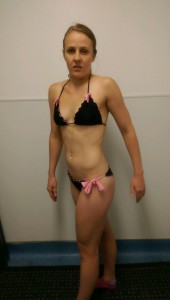 Would you please describe the mental journey since upping your calories?
Would you please describe the mental journey since upping your calories?
This was not easy. I think most diets have as much of a mental component as a physical. I was so scared to eat more because I didn’t want to get fat. The before and after pictures told a story of success, but would it really work for me too? I wondered. It didn’t take long to move past that though because I started feeling better almost instantly. That gave me encouragement to trust the process.
Any parting words of encouragement to those who are new to eating more, or struggling with the decision of whether or not to fuel properly?
Don’t think of it as a diet, think of it as a lifestyle change. Do you want to lost weight only to regain it, and then lose again for the rest of your life? No one wants to do that. We all want to keep it off, and be happy, healthy, and strong. The benefits to eating well are numerous — more energy, improved mood, better sleep, clearer skin, stronger hair and nails, and you even smell better! Stop wasting time with diets. Instead starting learning to fuel yourself and give your body the tools it needs to keep the metabolic fire roaring!
How can the fam hear/see/read more from you?
Be my friend on MFP (kelseyhere) or follow me on Instagram for cool recipes and healthy living tips @hideas_kitchen.
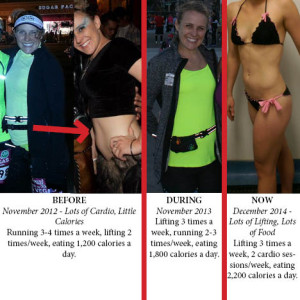
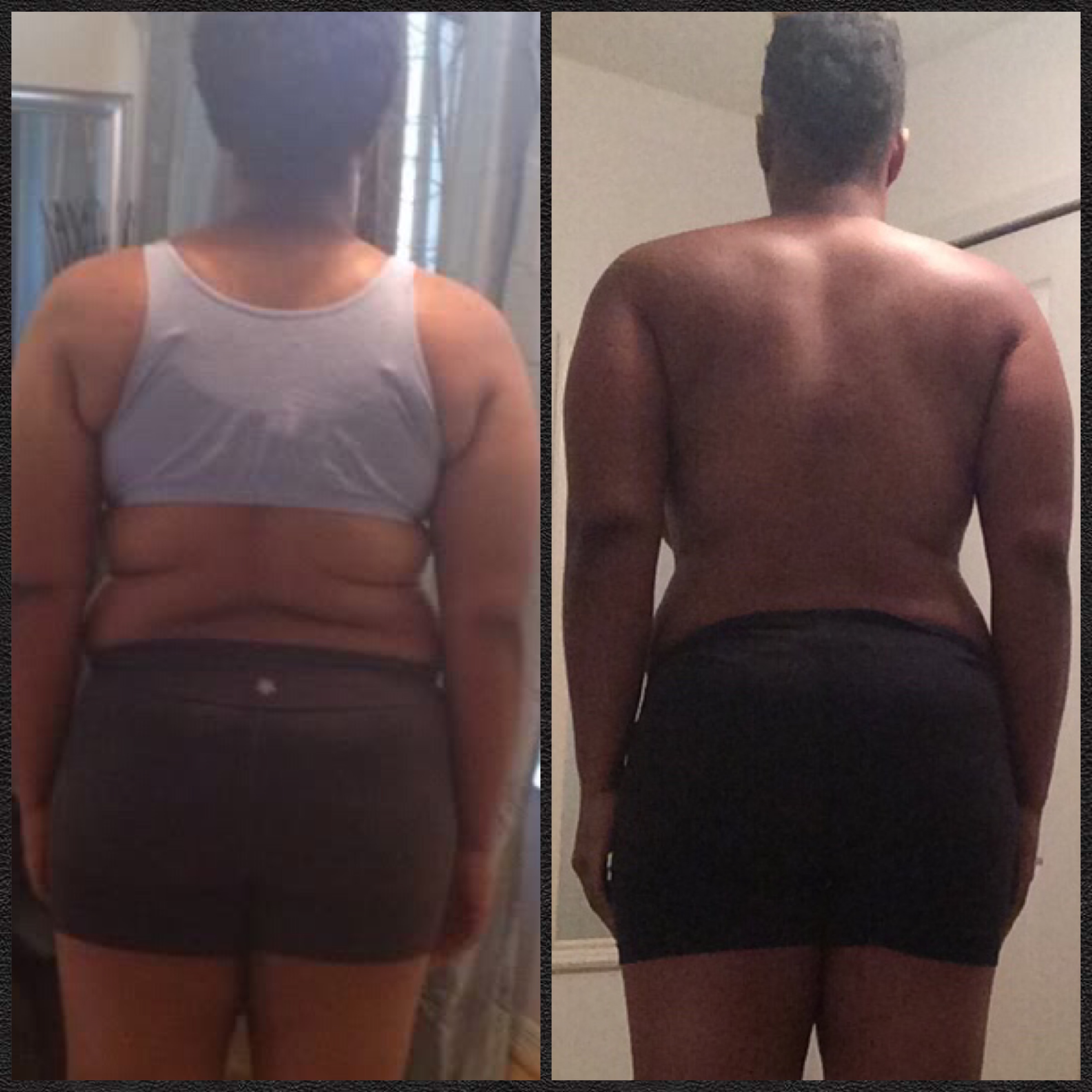
by EM2WL | Jan 6, 2015 | Testimonials, The Journey
I’ve (Kiki) been following Kim (Easybeingfat) on Instagram for a while now and I just love the long haul outlook she has on health and self love while achieving her goal physique. She knows that seeking out consistency rather than shortcuts, is the fastest way to lose weight. Thankfully, I was able to snag some time with her and get her to share with the fam her secrets to slow, steady, and sustainable progress.
How long have you been on this journey?
Well, for years I TALKED about losing weight and getting serious about my health. I didn’t get serious until June 2013. My best friend wanted to do p90x and she was adamant about me doing it with her. Of course I was all talk, and lazy, so I said no. I didn’t want to do it. She was persistent though. Being my best friend since 6th grade she knew exactly what to do and say. THANKFULLY, it worked!
I’m always in awe of your consistency (you surely see me tagging clients on your IG pics all day! LOL) Did you start out intending this to be a “long haul” thing, or did that mindset evolve over time?
Honestly, I started out lost. Uninformed, uneducated, ignorant in my opinion when it came to fitness/weight loss for MYSELF. No real goals but to simply be a certain weight. The scale was my biggest concern in the beginning. It determined ALL my success/progress back then. I honestly had no “plan” to do anything but make the scale say what I THOUGHT would make me feel better about myself. I simply wanted to be 185 pounds. THAT’S IT! As I stated, I was lost. My mindset has certainly EVOLVED! J
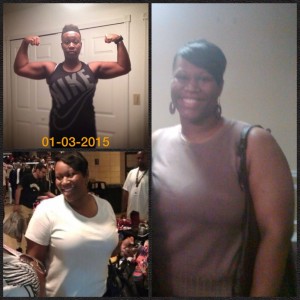 How did others around you act about your decision to discard the usual quick fix methods for weight loss?
How did others around you act about your decision to discard the usual quick fix methods for weight loss?
People were cool. I mean I don’t recall anyone saying anything about it. I have a pretty strong personality, so people really don’t think twice about questioning my choices. At least not to my face. Lol. What I mean by that is people know I won’t be bothered about how THEY feel or what THEY think about how I’m bettering myself. This is my journey to healthy living and I’m going to do what I want.
You motivate followers daily with your hilarious videos and inspirational messages. How do you manage to stay positive when progress slows or “appears” to be nonexistent?
SLOW PROGRESS IS STILL PROGRESS!! I say things like that to myself all the time. You’d be surprised how much I talk to myself daily to stay motivated. Not just about working out, but about progressing in life PERIOD! Simply being better. HEALTHY LIVING! They (whoever they are lol) say don’t look back, but sometimes thinking about how I USED to be or USED to look keeps me motivated. Knowing that this growth/progress didn’t happen overnight is motivation to keep going. I know what I want is out there to be mine as long as I continue to work hard and believe in myself. That keeps me motivated!
You struggle (openly) with your love of Krispy Kreme, lol! How do you balance the foods you love with the foods that nourish without getting too restrictive?
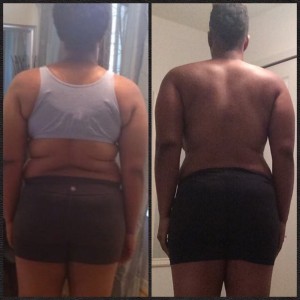 Did you say Krispy Kreme? Why must you tease me like that? Hahaha. This is by far the toughest thing about this journey for me. EATING! Lord knows I love all the things that aren’t good for you. No, I love to eat A LOT of all the things that aren’t good for you. Lol. That was my problem (portion control and binge eating). I’ve been through so many fad diets/eating plans it’s sickening. That’s why it’s called a journey because you go through so many things to figure out what works for you. I eat the things I like, just not those HUGE portions like I used to. I’ve learned to eat the “bad” things in moderation and try to have moderation in moderation. (that isn’t always the case) Something that works well for me is preparing healthier options that I absolutely love. I can literally eat the same thing every day. A lot of people start this journey eating things they don’t even like hoping it’ll help them loss weight. (I did this) For me, that was an easy way to start binge eating and that’s exactly what would happen. There goes the plan to lose weight! I mean why eat brussel sprouts if you don’t even like brussel sprouts? (I used this example because I used to eat them because they were healthier and I didn’t even like them)
Did you say Krispy Kreme? Why must you tease me like that? Hahaha. This is by far the toughest thing about this journey for me. EATING! Lord knows I love all the things that aren’t good for you. No, I love to eat A LOT of all the things that aren’t good for you. Lol. That was my problem (portion control and binge eating). I’ve been through so many fad diets/eating plans it’s sickening. That’s why it’s called a journey because you go through so many things to figure out what works for you. I eat the things I like, just not those HUGE portions like I used to. I’ve learned to eat the “bad” things in moderation and try to have moderation in moderation. (that isn’t always the case) Something that works well for me is preparing healthier options that I absolutely love. I can literally eat the same thing every day. A lot of people start this journey eating things they don’t even like hoping it’ll help them loss weight. (I did this) For me, that was an easy way to start binge eating and that’s exactly what would happen. There goes the plan to lose weight! I mean why eat brussel sprouts if you don’t even like brussel sprouts? (I used this example because I used to eat them because they were healthier and I didn’t even like them)
Find a healthier option THAT YOU LIKE! I have fallen in love with baked salmon, sweet potatoes, ground turkey, etc. All those things are so much better than the Popeye’s chicken, McDonalds, and Pizza Hut I used to eat on the regular in the past. I honestly never ate the healthier things until I started eating better. I’ve realized that the good stuff is just as satisfying as the bad stuff. On many occasions I find myself in awe at how good something healthy I cooked is. I become so elated about it and I’m like, “Omg! This is so good! It’s healthy too! I’m winning!” lol. Also, since my concern for weight loss is not like it used to be I find it easier to enjoy food. Now that my focus is more so fat loss and changing the way my body looks, I realize some of the things I thought I couldn’t have help me in some departments. For example, I love those non breaded wings from Publix. When I was focused on weight loss I’d eat them on cheat days. Now I use them as protein sources. Of course I’m not eating 10-15 of them as I would on a cheat day, only like 5-8. I know that gives me 40-60 grams of protein. Might be high in fat, but it fits my macros! Simply put, I work hard at staying on my plan to eat better, but I allow myself to splurge every now and then. It works for me.
Your body composition over the past year has been amazing to watch! Heavy lifting is clearly working for you. How do you balance that with your other love of running?
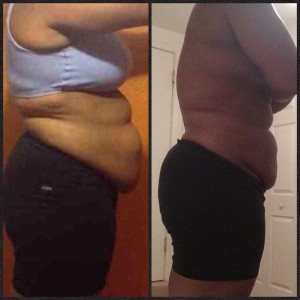 I really love lifting weights and I’m enjoying seeing my cardiovascular endurance improve with running. I think they both are very beneficial to me, my progress, and I enjoy them immensely. Being better and getting in shape is pretty much my life, so I plan everything around that. That is my priority now. The love I have for it makes it a priority, it being a priority makes it easy to balance. No fun until workouts are done!
I really love lifting weights and I’m enjoying seeing my cardiovascular endurance improve with running. I think they both are very beneficial to me, my progress, and I enjoy them immensely. Being better and getting in shape is pretty much my life, so I plan everything around that. That is my priority now. The love I have for it makes it a priority, it being a priority makes it easy to balance. No fun until workouts are done!
Your most hilarious Instagram posts are when you joke (or not?!) about all the crazy things you’re gonna do when you reach your dream bod (“fine”) status. I love that while striving for “fine” you are still unafraid to put yourself out there, enjoy life, and love yourself NOW. Any advice to other ladies who struggle with reaching a balance of wanting to change, while keeping a healthy body image?
They are definitely jokes! I simply put humor in the things most people think but don’t say. Lol. Anyway, I think self-love is the key. No matter your shape or size, if you don’t love yourself it won’t matter how “fine” you get or how fine you are. You can love your body enough to want better for it! I understand what it’s like to feel unpretty and/or unattractive because you don’t look like what’s on the TV or you don’t get the attention like those that do. I battled that for years. It’s a battle you will ALWAYS lose as long as you don’t love yourself. As long as you use society’s definition of beauty as your source. Propaganda. No I do not look like Halle Berry or Gabrielle Union. Does that mean I’m not beautiful? No, because I am beautiful! I don’t have abs, but I’m still sexy! That’s the attitude to have! Love yourself enough to find YOUR beauty and exude that! In the mean time stop downing yourself and make a change. Not allowing others opinions to bother you plays a huge role in that as well.
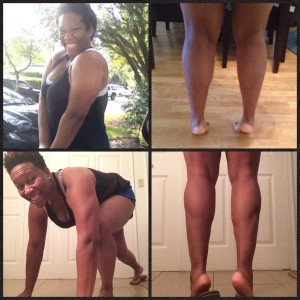 Can you describe your typical workout schedule?
Can you describe your typical workout schedule?
My workouts have truly evolved! When I first started this journey I did things like p90x, Insanity, and t25 (home workouts). If it didn’t require weights or weight lifting in those workouts, I didn’t lift weights. I think those workouts were very beneficial for me. Especially p90x. I liked it most because it was more strength based. I enjoyed the push-ups, pull-ups, etc. That’s when I realized I should lift weights. Seriously, lift weights. Not that playing around in the gym like I’d done before. My love for strength training came from p90x. My workout regimen back then was just that. 5 days a week I’d get up, do my Insanity/p90x/T25 workout, and then go to work. These days I only workout 3 days a week. On those 3 days I run and I go to the gym immediately after to lift weights. Two a days! Every now and then I’ll dance for exercise as well! Lol. I’m using an app called couch to 5k to help me with running. It builds your endurance up with brisk walking, jogging, etc. I’m on week 6 now which is mostly running. You start out with a brisk walk for 5 minutes then you are running for 20-30 minutes straight. The prior weeks prepare you for this. As far as my weight lifting goes, I have 2 full body workouts that I alternate between. The workouts were given to me by Mat Arcon (mat_arcon on IG). I was introduced to him via IG and he has helped me so much. He was like my coach. He provided me with the exercises and the workouts. I added a few exercises myself, but I pretty much do the same thing. What’s great about it is every workout, you’re progressing. You’re either doing more reps or more weight. It works for me! He simply gave me the blueprint and I’m building the masterpiece. Lol. He also introduced me to if it fits your macros. IIFYM. I’d never heard of that until he talked about it.
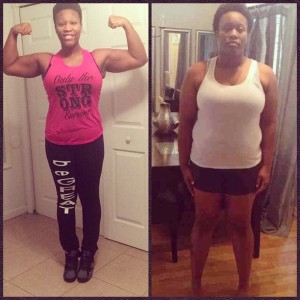 Any parting words of encouragement to those who are new to the “long haul” philosophy, or struggling with the decision of whether or not to lift/fuel properly?
Any parting words of encouragement to those who are new to the “long haul” philosophy, or struggling with the decision of whether or not to lift/fuel properly?
Of course! As random as they come to my brain, here you go. You have to find what works for you. There are a million ways these days to get in shape, lose weight, etc. You will probably try a few of them. Once you figure out what you like and what helps you MOST to reach your goals, STICK WITH THAT. Don’t talk about it, be about it. Don’t let fear be the basis of your decisions. GO FOR IT! Forget what everybody says about what you are doing. If it works for you, DO THAT! It’s called a journey for a reason. There will be ups and downs. You have to fight for what you want. I’d be lying if I said it would be easy. Its hard work, dedication, determination, etc. Before you do anything physical, work on getting your MIND right. That’s usually what hinders us. You will either make excuses or make it happen. If you choose excuses, stop complaining. Nothing works unless you do! When you are ready to make a change, you will! Just know that if you don’t plan on working hard you’re wasting your time. Don’t be afraid to fall down or fail. Its apart of success! It’s cool to have others that motivate you but you need to find the motivation within yourself. Others motivate you to get up, self-motivation keeps you going! Lastly, love yourself and grow! ;-)
How can the fam hear/see/read more from you?
YouTube: www.Youtube.com/user/easybeingfat
Instagram: Easybeingfat
MyFitnessPal: Kimd8fifty
Email: Easybeingfat@gmail.com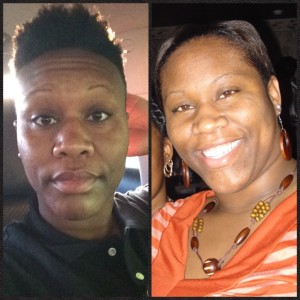
Plugin by Social Author Bio

 EM2WL: Like so many of us, you bought into the eat less move more propaganda. You talked about being at your ideal scale weight but your body still not looking the way that you wanted. What was the turning point for you and what steps did you take to make a change?
EM2WL: Like so many of us, you bought into the eat less move more propaganda. You talked about being at your ideal scale weight but your body still not looking the way that you wanted. What was the turning point for you and what steps did you take to make a change? prints mostly now, for 10-12 minutes, and that’s the extent of my running. 30 seconds on and 30 seconds off.
prints mostly now, for 10-12 minutes, and that’s the extent of my running. 30 seconds on and 30 seconds off. E: Switching gears to your figure competition diet and prep…People often hear of a competitor doing a 9,12, 20 week, etc competition prep and feel that their own journey should be “finished” within similar lengths of time. How long would you say the time was between giving birth and the “official” beginning of prep for your recent return to the stage? (In other words, how much “pre-prep” prep?)
E: Switching gears to your figure competition diet and prep…People often hear of a competitor doing a 9,12, 20 week, etc competition prep and feel that their own journey should be “finished” within similar lengths of time. How long would you say the time was between giving birth and the “official” beginning of prep for your recent return to the stage? (In other words, how much “pre-prep” prep?)
 C: Actually…no…I weigh the most I ever have and wear the same size pants. I naturally have a wide frame around my lats, so now I’ve embraced that and know to grab a medium top first and go from there. Doesn’t mean I’m fat, need to lose weight, or should restrict things from my diet, just means I’m better at those pull-ups I’m always trying to perfect.
C: Actually…no…I weigh the most I ever have and wear the same size pants. I naturally have a wide frame around my lats, so now I’ve embraced that and know to grab a medium top first and go from there. Doesn’t mean I’m fat, need to lose weight, or should restrict things from my diet, just means I’m better at those pull-ups I’m always trying to perfect.







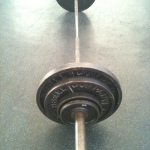
















Recent Comments